Image Credit: Isaac Breekken, AP
Image Credit: Isaac Breekken, AP A great deal of high-level radioactive waste is being stored at nuclear power plants today, such Indian Point, pictured here.
Image Credit: Indian Point
In my seemingly endless desire to dive headfirst into controversy, let me return to the issue of nuclear waste storage — something I last wrote about in this column five years ago, in January, 2009. This is a relevant issue today because of the pending closure of Vermont’s only nuclear power plant.
Entergy has announced that Vermont Yankee will close around the end of this year — largely a victim of low-cost natural gas. The big question now is how long it will be until the plant can be decommissioned and what to do with the large quantities of radioactive waste that are being stored onsite.
Terrorism risks with nuclear power
My concern with nuclear power has always been more about terrorism than accidents during operation or storage. I continue to worry that terrorists could gain entry to nuclear plant operations and sabotage plants from the inside — disabling cooling systems and causing a meltdown.
There is also a remote risk of unanticipated natural disasters causing meltdowns or radiation release, as we saw so vividly with the Fukushima Power Plant catastrophe in Japan in March, 2011.
But it’s radioactive waste storage I’ll cover here.
Rethinking long-term storage of high-level radioactive waste
For more than 30 years, the nuclear industry in the U.S. and nuclear regulators have been going down the wrong path with waste storage — seeking a repository where waste could be buried deep in a mountain. Nevada’s Yucca Mountain was the place of choice until… it wasn’t.
Any time we choose to put highly dangerous waste in someone’s backyard, it’s bound to cause a lot of controversy, even in a sparsely populated, pro-resource-extraction place like Nevada. NIMBY opposition can be boosted by people in powerful places, and in the case of Yucca Mountain, Nevada senator Harry Reid has played such a role. (He has been the Senate Majority Leader since 2006 and served prior to that as the Minority Leader and Democratic Whip.)
Aside from NIMBYism, the problem with burying nuclear waste in a mountain (like Yucca Mountain) or salt caverns (like New Mexico’s Carlsbad Caverns — an earlier option that was pursued for a while in the 1970s) is that the maximum safety is provided at Day One, and the margin of safety drops continually from there. The safety of such storage sites could be compromised over time due to seismic activity (Nevada ranks fourth among the most seismically active states), volcanism (the Yucca Mountain ridge is comprised mostly of volcanic tuff, emitted from past volcanic activity), erosion, migrating aquifers, and other natural geologic actions.
A better storage option
I believe a much better solution for long-term storage of high-level radioactive waste is to bury it deep under the seabed in a region free of seismic activity where sediment is being deposited and the seafloor getting thicker. In such a site, the level of protection would increase, rather than decrease, over time.
In some areas of seabed, more than a centimeter of sediment is being deposited annually. Compacted over time, such sediment deposition could be several feet in a hundred years, and in the geologic time span over which radioactive waste is hazardous, hundreds to thousands of feet of protective sedimentary rock would be formed.
The oil and gas industry — for better or worse — knows a lot about drilling deep holes beneath a mile or two of ocean. I suspect that the deep-sea drilling industry would love such a growth opportunity to move into seabed waste storage, and I believe the Nuclear Regulatory Commission or other agencies could do a good job regulating such work.
The waste could be placed in wells extending thousands of feet below the seabed in sedimentary rock in geologically stable regions. Let’s say a 3,000-foot well is drilled beneath the seabed two miles beneath the surface of the ocean. Waste could be inserted into that well to a depth of 1,000 feet, and the rest of the well capped with 2,000 feet of concrete or some other material. Hundreds of these deep-storage wells could be filled and capped, and such a sub-seabed storage field could be designated as forever off-limits.
Industry or the Department of Energy would have to figure out how to package such waste for safe handling at sea, since the material is so dangerous, but I believe that is a surmountable challenge.
For example, perhaps the radioactive waste could be vitrified (incorporated into molten glass-like material) to reduce leaching potential into seawater should an accident occur at sea, and that waste could be tagged with radio-frequency emitters so that any lost containers could be recovered with robotic submarines in the event of such accidents.
While I’m not an expert in any of this, I’ve looked at how much money taxpayers and industry have already poured into Yucca Mountain — about $15 billion by the time the Obama Administration terminated federal funding for it in 2010, according to Bloomberg News — and the estimates for how much more it would take to get a working waste storage facility of that sort operational had risen to about $96 billion by 2008, according to the U.S. Department of Energy at the time. I believe that sub-seabed storage would be far less expensive.
Should nuclear power be part of our energy future?
I used to be a firm opponent to nuclear power, and I am still opposed to the form of nuclear power we have today. But my position is softening. Should nuclear power plants be developed that have failsafe, passive cooling systems that would prevent a meltdown even if sabotaged from the inside (I don’t know if that would be possible), if the economics of such plants could work, and if we can shift to safer long-term storage, I could get behind a rebirth of the nuclear power industry.
Those are big “ifs,” and I have doubts that they will be satisfied, but I recognize that nuclear power is largely free of carbon emissions — unlike natural gas, oil, and, especially, coal. We need to dramatically reduce carbon emissions if we are to prevent catastrophic global warming, according to leading scientists.
A starting point for the nuclear industry in building new support for nuclear power should be re-examining sub-seabed waste storage, which could be far safer and far less expensive than other approaches being focused on most actively today.
Alex is founder of BuildingGreen, Inc. and executive editor of Environmental Building News. In 2012 he founded the Resilient Design Institute. To keep up with Alex’s latest articles and musings, you can sign up for his Twitter feed.
Weekly Newsletter
Get building science and energy efficiency advice, plus special offers, in your inbox.

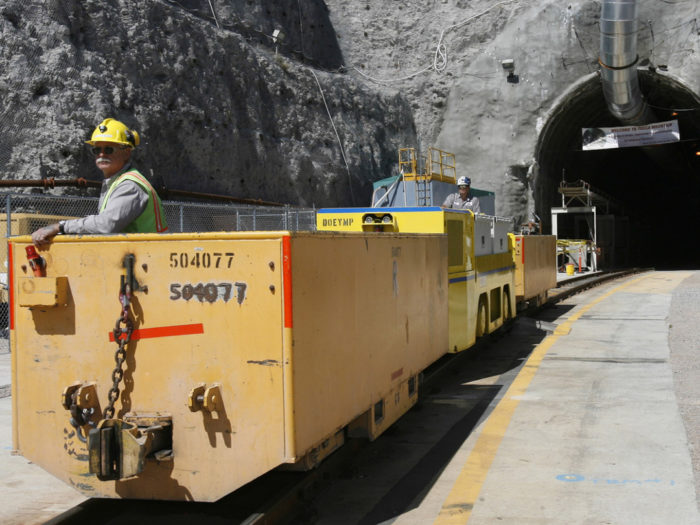




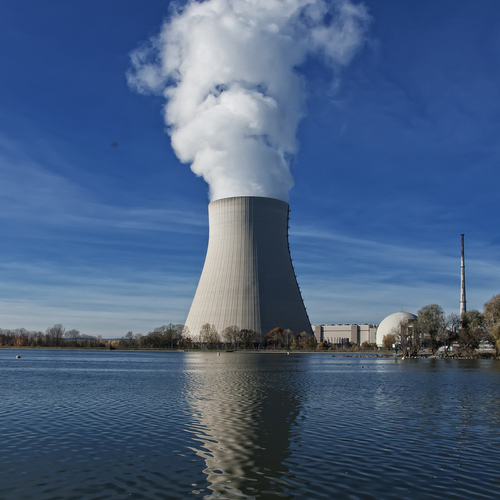
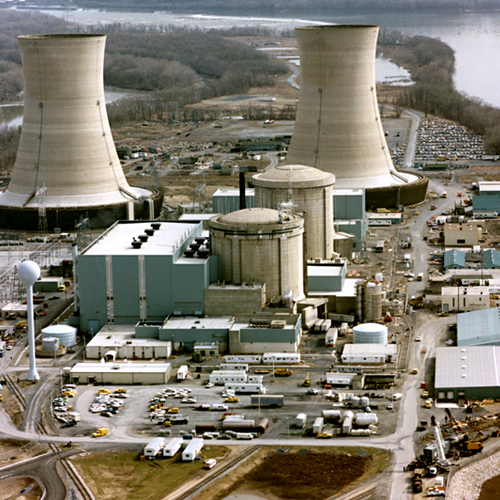
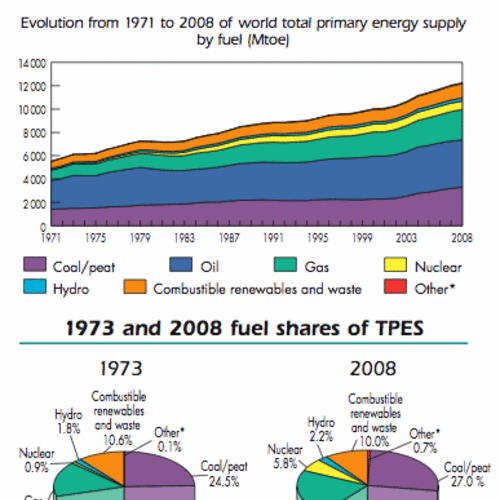
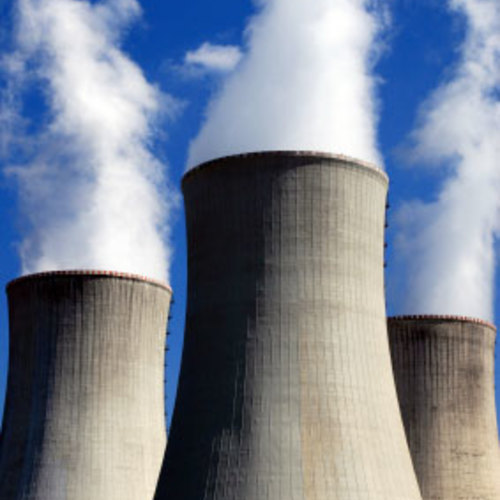






11 Comments
Nuclear waste storage and nuclear power generation
The Gar Smith book NUCLEAR ROULETTE offers an extensive in-depth review of the history of nuclear power that is well worth reading if you can stomach the detail. Worthwhile reading! Your perspectives will not remain unaffected. Published by Chelsea Green 10/2012. Especially good chapters on the issues of nuclear waste.
Regarding a nuclear energy future...
Electricity demand in the US is flat or falling, with only the ERCOT grid (TX) seeing increases in baseload demand. But even on the ERCOT grid the capacity factors of traditional baseload generators has been falling, with most of that power being displaced by new-wind, which has no marginal per kwh cost to speak of- the cost of wind is all in the financing. And at the rate of implementation of distributed solar, that's destined to cut even further into the baseload that needs to be supported by slow-ramping stable sources like nukes. The US PV capacity has been doubling every 2.5 years for the past decade, and that may be accelerating as the cost of PV continues to plummet, crossing below the "retail grid parity" in every US market. At Q4 2013 pricing the lifecycle cost of distributed grid tied PV is about 8 cents/kwh, which is less than residential-retail rates almost everywhere. This isn't going away- it's a growing tsunami of distributed destined to short-circuit the business model of far more nukes than the wet one that shut down Fukushima.
Even "the little nukes that could" thorium reactor designs have a significant fuel and maintenance costs, and unless there is a demonstrable demand for more baseload power that ISN'T being met by the growing capacity of low-cost distributed generation that has no marginal-kwh cost, no financial model for building new nukes can make it.
There is a lot of development going on with "soft-grid" demand-response peak-shaving of the load, as well as distributed grid energy storage, which is needed for stabilizing the grid as the the fraction distributed renewables reach certain saturation points, and it's proving cheaper and more reliable than most utility operators imagined even 5 years ago. And, the efficiency well is still cheap & deep compared to any new generation- demand COULD continue to fall (even precipitously in the near term) if policy makers were to embrace it fully.
Bottom line- the new-nukes may be really cool and all, but rather than being too cheap to meter, they're proving too expensive to matter. Georgia Power (a state-wide monopoly) has somehow gotten regulators to allow them to assess the ratepayer for the construction costs prior to being built- a move that has unified people from the Tea Party right to the Green Party left in opposition, forcing Ga.Power to put up their own PV fig-leafs (rather than allow third-party PV financing of private rooftop PV). But it's not entirely clear the new nukes will ever produce power anywhere near as cheaply as the alternatives.
As the utilities adjust their business models to the reality of new cheap distributed generation outside of their direct control, they will likely become grid-management services companies (some already are), and to make the numbers work profitably even for existing nukes (with no capital financing costs) takes wholesale power rates of 7 cents/kwh or greater. Thorium fuels might bring that down to 4 cents/kwh were it not for the cost of the capital. But by 2020 that will be the lifecycle cost of rooftop PV. Applying the grid operator (and others') capital resources to grid storage & management hardware would be a better utilization of funds than building nukes. (And that's exactly what's happening in California & Germany today.)
Only China, and maybe India will have sufficient growing baseload demand to have a case for new nuclear power. But given the water resources needed for cooling the grid-share they will have even in those rapidly growing locations will be limited. Coastal locations can work (with some caveats), but in India there is already strain between the competing demands of agriculture and thermal-power limiting powerplant development in the interior. (Thermal coal plants can only operate during and shortly after the monsoons in some drought stricken areas.)
$96 billion That's money worth discussing
96 billion, is that being paid monthly in nuclear energy users rates?
Sort of like when PV cost is discussed, no one factors in the cost of replacing the electronic components that have so far historically needed replacing one two or more times per the life of the panels. And the electronics is a large part of the total cost. And even like nuclear there is a cost to dispose of PV at the end of life, though I have no clue what that would be or if very significant.
Alex, as to the deep sea in glass idea... I like it.
AJ, just WHAT are you talking about?
"Sort of like when PV cost is discussed, no one factors in the cost of replacing the electronic components that have so far historically needed replacing one two or more times per the life of the panels."
Yer kiddin' right? Inverter (and battery, for off grid) replacment ALWAYS part of the lifecycle per kwh cost in ANY analysis I've read! The "balance of system" costs have been the PRIMARY focus of all the PV wonks at Lawrence Berkeley, NREL and RMI for at least the past 3-5 years, now that it's clear the PV panel costs are taking care of themselves, and no longer the system or lifecycle per-kwh cost-driver.
But maybe those folks all fall under "nobody" in that statement? ;-)
Inverter costs have also been falling in cost and rising in efficiency (if not longevity), and have a very favorable cost/functionality trend. It's anticipated that in some installations you'll be better off replacing the thing in 15 years even if it's still working fine, given the rate of innovation and increased functionality that is anticipated. This is particularly true if you have an electric car and "smart charger" to take advantage of real time pricing, in markets where you'll be allowed sell some of your car-battery charge back to the utility at peak.
Like your PC or phone, the circa 2029 inverter you buy 15 years from now will be cheaper and have far more smarts than your circa 1999 version of 15 years past, and the upgrade will pay for itself. The year-on-year price drop on the inverter hardware per watt has been in double-digit percentages for the past decade, the same time that efficiencies have crept up. That has made the up-front an lifecycle cost of the inverters cheap (cheaper than I would have believed even 5 years ago), and are taking care of themselves. The current nut worth cracking is racking & installation costs, which has been dramatically and stubbornly more expensive in the US than in Germany for a variety of reasons, but beginning to melt a bit.
http://www.greentechmedia.com/articles/read/Better-Racking-Drives-Down-Solars-Soft-Costs
http://www.rmi.org/PDF_reducing_solar_pv_soft_costs
http://www.greentechmedia.com/articles/read/is-the-mega-module-the-future-of-rooftop-solar
Dana, bought today at full
Dana, bought today at full cost what would a 5.4kw 28 panel system cost including the future material and labor to replace the inverter twice?
Dana, I checked and now do see your point that inverters have been dropping in cost. I tried to search for inverters that are made with easily replaceable parts... need your help on that search.
Response to AJ Builder
A.J.,
The cost to install a 5.4-kw PV system, including the inverter, is about $21,000 to $27,000.
A 6-kW grid-tie inverter costs about $3,500 to $4,000 -- call it $4,500 installed. If you do it twice, it might cost $9,000.
So the answer to your question is: $30,000 to $36,000.
Why not reprocessing?
Why doesn't the US reprocess nuclear waste as is done successfully in France, Britain and Japan? There are proliferation concerns but somehow those countries manage that concern. There would still be the 4% waste left for which Yucca mountain or the undersea idea could work but why waste a lot of energy that is still in the spent fuel?
Is this the right website?
I live only 150 miles away from two nuclear disasters that occurred in the 50's, so I have a hard time believing our government is capable of such dangerous waste transfers.
Haven't heard of that, not surprising as it was covered up very well, but there are mutant fish in the lakes around Arco, Idaho. Do you think that containers of high level waste, which change at an atomic level when bombarded with that much radiation will not leak into the ocean? What greater disaster could there be than contaminating the oceans? We are currently on this slippery slope of global contamination through the inept response to Fukushima.
There is no safe way to store this stuff!
Technology will not save us, we must re-establish our relationship with the rest of the Earth.
Nuclear has a very bad track record
From what I have found, there have been about 45 or so commercial nuclear reactors that have been shut down. http://en.wikipedia.org/wiki/Nuclear_decommissioning Of those, three have had catastrophic endings - Three Mile Island (thankfully not as bad as it could have been), Chernobyl and Fukushima. That is an amazing bad track record, especially when the consequences of a bad shutdown can easily be at the continental scale.
If you have a chance to look at photos of the control centers of nuclear power plants, it is like looking at an exhibit in a technology museum, like everything is frozen in time in the 1970's. It doesn't provide a sense of reassurance seeing that. I believe some of the instruments were not actually checking actual readings, but were providing readings based on 'if/then' situations - this was part of the issues at some of the nukes that had serious accidents.
It is my opinion that if all we had were renewable energy sources, engineers and planners could devise a system that works. It might be different than we currently have, but it would be fully sustainable, both from an energy supply and climate change emissions point of view - innovative energy storage systems would be worked out.
Nuclear energy is so expensive that Wall Street will not touch it. There haven't been new reactors built in this country since the 1970's, and the two being planned right now in the US are only being done with Federal money.
Additionally and more significantly, the model for using ultra large scale base load power is going away rapidly. Decentralized power production is the way of the future, and that future is coming very quickly. Utility companies are seeing the writing on the wall, and are either trying to dismantle Renewable Portfolio Standards at the state level, taxing homeowner renewable energy installations or are hedging their bets by investing in renewables. The need to carefully navigate this new world, or they will follow the model of centralized phone services vs. decentralized cell phone usage.
RE:Why not reprocessing
Robert, The US had reprocessed fuel from nuclear reactors for many years. The reprocessed fuel is also how we extracted the plutonium for the weapons programs. But in the 90's the US and Russia began a program of reducing the nuclear weapons -- as a result much of the fuel used in US reactors has been coming from the materials from decommissioned warheads.
Fuel re-processing also consumes energy - and there are other waste products that must be stored from the reprocessing facilities. Outside of the nuclear plant accidents that have happened. Japan had one major criticaliity accident at their fuel reprocessing plant. Three fatalities as a result of improper mixing of too much solution into one tank. Not a chemical reaction - a reaction in which the fissionable materials went critical!
Spent nuclear rods can be placed into the storage casks These are VERY large casks - designed to take on some serious damage by terrorist attacks and still survive. The area that I am more concerned about is all the chemicals and reprocessing by products... Richland Washington has tank farms of the stuff left over from years of weapons and fuel reprocessing. Tanks that leak.
The vitrification process suggested by Alex - consumes an enormous amount of energy. In some states that energy would be provided by using coal as the electrical source for a vitrification plant. Current efforts in the Richland Washington area to build and begin the operation of a vitrification plant is years behind schedule and multiple billions of dollars over budget. As troubling -- once the facility begins - maintenance of the equipment will be difficult - because of the high level of radioactive materials it will be processing.
Burning up (in a reactor) the previous spent fuels and materials has been proposed by a number of scientists and companies. One method is the "travelling wave" method in which old fuel is mixed with small amounts of a new starter fuel and the old byproducts are further consumed -- without all the resprocessing... but to date -- no such reactor exists -- which also means the unintended consequences and its wastes products are not fully understood...
Cost of solarPV
In my area of Washington State (Puget Sound)
250W micro inverters with warranties of about 20+ years are selling for about $240 each.
250W solar modules are selling for about $350
6KWdc uses 24 x 250W modules for a cost of $8400
24 inverters would cost about $5800,
Racking about another $3000
Electrical cables for inverters $2000
Raw materials
$8,400 pv modules
$5,800 inverters
$3,000 racking
$2,000 inverter cabling
--------------
$19,200
Labor, permits and profit for installers is unknown. That may be above costs shown.
Prices above are single unit prices - based on retail if I walk into my electrical distributor and buy off the shelf. No subsidies, rebates, or tax credits included in the prices above.
6kWdc is good for about 5.7kW ac. In Seattle each kW installed is good for about 1.09MWh each year (utilty reports and actual experience). Thus a 6kWdc system can offset approximately 6MWh of grid tied electrical use each year.
If solarPV is installed gridtied and eligible for Federal tax credit. That could be $6000 off the $19,200 price above... lowering the cost to effectively $13,000.
In Washington State production credit for solarPV is $0.15/kWh generated until about 2020, thus for the next six years the credit would be approximately $900 each year. Or another $5400 returned (no NPV considered) off the $13,000 further lowering the cost to $7600.
Electric rates are currently about $0.10/kWh... (no provision for inflation)... at 6MWh per year, that would be about $600 avoided electric bill cost each year. 13 years break even. (ignoring value of money, NPV, inflation, etc)....
As an ordinary investment - it doesn't sound great... but neither would a $20K investment in the stock market in 2007... if you were not patient. Or if your investment had been in one of the companies that went bankrupt.
A 13 year return on the investment is probably a better deal than going out and replacing double pane windows with the latest and greatest triple pane windows...
At the end of the 25 year suggested life... modules should cost less.. much of the electrical work is already in place. Racking system may have changed... but it is also likely that the cost to upgrade to a replacement system will be half of the price of the system listed above...
Log in or create an account to post a comment.
Sign up Log in